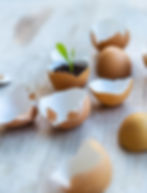Celebrating Imbolc
- Downtown Tarot Company
- Jan 31, 2023
- 4 min read
The History of Imbolc
The Wheel of the Year is an annual cycle of eight seasonal sabbats that are observed by many historical and contemporary pagans. If you’ve been following our blog, you may remember our post about Samhain back in October. Now as February approaches, many people are preparing to celebrate the first of the three Spring sabbats: Imbolc.
Imbolc (im-olc) is celebrated on February 1st and marks the halfway point between the Winter solstice and the Spring equinox. In addition to the seasonal transition from Winter to Spring, spiritually Imbolc is associated with the feminine, birth, motherhood, children, fertility, light, candles, water, snowdrops, and the Goddess Brighid. Even the word “Imbolc” is thought to come from the Gaelic “Imbolg,” meaning “in the belly,” as during this time the growth of Spring is forming in the womb of Mother Earth.
Imbolc originated with the ancient Celtic communities of Europe, with the earliest historical mentions of the celebration found in 10th century Irish literature. Seasonally during this time those in the British Isles would begin to notice the early signs of Spring: lambs and calves were born, ravens would begin making nests, the land would soften enough to be dug or ploughed, and snowdrops would begin to bloom.
Just as Samhain has historical ties to the Christian All Hallows Eve and the secular Halloween, the Catholic Candlemas took its inspiration from the pagan Imbolc, with the Celtic Goddess Brighid even being adopted as St. Brigid by the Catholic Church. The Celtic Goddess Brighid is often celebrated during Imbolc due to her association with sacred fire, fertility, healing, poetry, and the art of smithing. Brighid was honored during Imbolc with rituals, candles, bonfires, feasts, and even with dolls made from oat or wheat straw.

Ways to Celebrate Imbolc
Similar to the sabbats Samhain, Beltane, and Lughnasadh, Imbolc is a fire festival. However, Imbolc focuses on light rather than heat, and so candles are often used in rituals and ceremonies. One Imbolc ceremony involves placing candles in a dish of water, in which the candles symbolize the light of Spring and the water represents the womb of Mother Earth. Here are a few more ideas of contemporary ways that you can celebrate Imbolc.
1. Light Some Candles – As Imbolc is a celebration of light, candles are one of the main representatives. Imbolc is a great time to practice candle magic, use them in rituals or meditations, incorporate them on your altar, or simply enjoy the candlelight in your home. Candles can help make a space feel warm and inviting, so as you light a candle on Imbolc, focus on what energy you want to invite into your home and into your life for the upcoming season.
2. Plant the Seeds – Imbolc is the perfect time for growing indoor or outdoor (if the weather permits) plants. If you don’t have a green thumb, use Imbolc as an opportunity to “plant the seeds” of a new creative project, a new goal, or a new mindset. Focus on the aspects of your life that have potential and dedicate Imbolc to nurturing them. Especially because Brighid is associated with arts like poetry and smithcraft, call on the goddess for support with inspiration and creative endeavors during Imbolc.

3. Spend Time in Nature – Historically Imbolc was when people began to notice the early signs of Spring in the natural world. Regardless of what season it is where you live, Imbolc is a great time to strengthen your connection with nature by observing its patterns, changes, and growth. Snowdrops are one of the plants most associated with Imbolc, representing rebirth and renewal because of their early bloom. So, if you live in an area that grows snowdrops, keep an eye out for these lovely flowers.
4. Honor Brighid – The Goddess
is closely intertwined with Imbolc, and so if she is a deity you seek to work with, Imbolc is the perfect opportunity to connect with Brighid, honor her, or even ask for her support and guidance. If you already have an altar, one way to honor Brighid might be to leave her a candle or an offering there. Other ways to connect with the goddess is through meditation, prayer, divination, or really any metaphysical practice that feels right for you.
5. Celebrate Mothers & Children– Imbolc is dedicated to growth and fertility as well as mothers and children. During Imbolc show love, support, and gratitude towards mothers, motherly figures, or children in your life. In particular consider how motherly figures have nurtured you, or how you have been a nurturer for others. If you have children in your life, take time to appreciate their potential and their continuing growth. Imbolc may even be a great time to connect with your own inner mother and inner child by journaling or reflecting on what you need in your current life to better nurture yourself.
These are just a few of the many ways that you can celebrate Imbolc. Do you have more ideas? Leave us a comment! We would love to hear about how you plan to celebrate.
Crystal Fact of the Week
Alright, buckle up: there is myth that Dionysus, Greek god of fertility, wine and pleasure, was once insulted by a mortal, and in his rage vowed to send tigers after the next person who crossed his path. This unlucky mortal was Amethyst, a woman on her way to the temple of Artemis. When Dionysus sent his tigers after her, Artemis intervened and turned Amethyst into a clear crystal that would not be hurt by the tigers’ claws. Remorseful for his actions, Dionysus poured wine over the crystal as an offering, turning it from clear to purple. Funny enough, “amethyst” comes from the Greek “amethystos,” meaning “not drunk,” and so ancient Greeks and Romans believed the crystal amethyst would prevent drunkenness.





